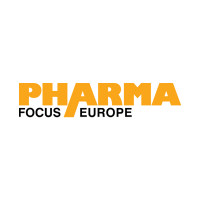Chiral Biosensors: Revolutionizing Enantioselective Detection in Life Sciences and Industry

Strong 8k brings an ultra-HD IPTV experience to your living room and your pocket.
Chiral biosensors are revolutionizing the field of analytical chemistry by enabling highly selective detection of enantiomers in pharmaceuticals and biological samples. These advanced sensors offer improved accuracy and sensitivity, making them essential tools in drug development and quality control processes. Explore the latest innovations and applications of Chiral Biosensors in modern diagnostics and research.
Chirality plays a critical role in chemistry, biology, and pharmacology. Many biomolecules, including amino acids, sugars, and drugs, exist in enantiomeric forms—mirror images that are non-superimposable. These enantiomers often exhibit drastically different biological activities, making it essential to differentiate between them in various applications. This is where chiral biosensors have emerged as powerful tools, enabling the detection and discrimination of enantiomers with high precision and sensitivity.
Chiral biosensors are analytical devices that combine a biological recognition element with a transducer to selectively detect chiral molecules. These biosensors are specially designed to identify the specific spatial arrangement of molecules, which is crucial for accurate pharmacological profiling, food safety testing, and environmental monitoring. Traditional methods like chromatography and spectroscopy, while effective, often require complex instrumentation, time-consuming protocols, and skilled operators. In contrast, chiral biosensors offer rapid, cost-effective, and portable alternatives suitable for on-site analysis.
The core mechanism of chiral biosensors lies in their ability to distinguish between left- and right-handed enantiomers. This is achieved through the integration of chiral recognition elements such as enzymes, aptamers, molecularly imprinted polymers (MIPs), or chiral nanoparticles. These components interact selectively with one enantiomer over the other, producing a measurable signal—optical, electrochemical, or piezoelectric—that reflects the concentration and identity of the target molecule.
In the pharmaceutical industry, chiral biosensors are transforming the way drug purity and efficacy are assessed. Many drugs exhibit chirality, and often only one enantiomer is therapeutically beneficial, while the other may be inactive or even harmful. With increasing regulatory emphasis on enantiomeric purity, biosensors provide a streamlined method for quality control during drug development and manufacturing.
Environmental and food safety sectors also benefit from chiral biosensing technology. For instance, certain pesticides and pollutants exhibit enantioselectivity in their toxic effects. Using chiral biosensors enables rapid screening of samples for the active enantiomer, ensuring better risk assessment and regulatory compliance.
Recent advancements in nanotechnology and synthetic biology are further propelling the development of highly sensitive and specific chiral biosensors. Techniques such as surface plasmon resonance, fluorescence resonance energy transfer (FRET), and electrochemical impedance spectroscopy are being integrated into biosensor platforms to enhance their performance. Additionally, the miniaturization of devices and the development of portable biosensors are opening doors for point-of-care diagnostics and field-based applications.
In conclusion, chiral biosensors represent a significant leap forward in analytical science, offering unparalleled advantages in enantioselective detection. Their applications span across diverse fields such as pharmaceuticals, food safety, environmental monitoring, and clinical diagnostics. As technology continues to evolve, the role of chiral biosensors will become even more prominent, driving innovation in both research and industry. Businesses, researchers, and regulatory bodies should continue to invest in and adopt chiral biosensing technologies to ensure accuracy, safety, and efficiency in their respective domains.
https://www.pharmafocuseurope.com/articles/chiral-biosensors-precision-tools-for-safer-drugs
Note: IndiBlogHub features both user-submitted and editorial content. We do not verify third-party contributions. Read our Disclaimer and Privacy Policyfor details.



